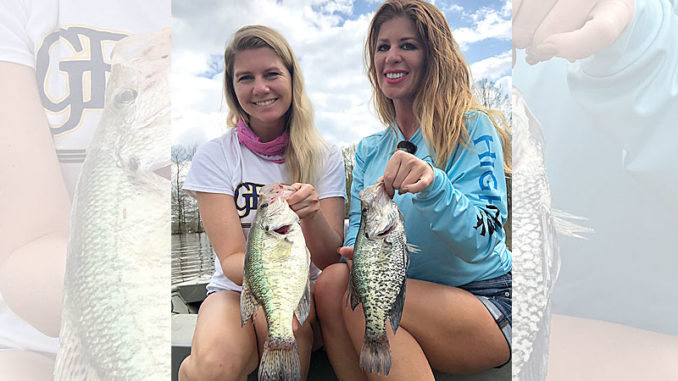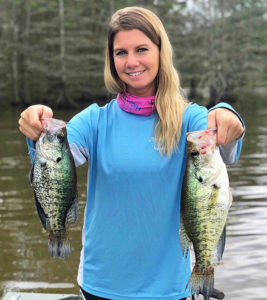
Crappie anglers in northeastern Louisiana habitually make a beeline towards Toledo Bend during late winter to early spring. This famous body of water is a prime Louisiana location for the prespawn papermouth bite. However, these cold-weather anglers unintentionally pass up a hidden crappie hotspot near Leesville, which consistently produces stringers year-round.
I would have been right there, bumper to bumper, heading towards Toledo Bend, too, if I wasn’t shown how great Anacoco Lake was by an angler last year. Ever since, I’ve been fishing around Leesville with my good friend, Sunny Martinka.
Martinka grew up fishing Anacoco Lake, a passion she now shares with her daughter and, thankfully, was kind enough to share with me. For roughly a year, I have successfully targeted crappie in Anacoco Lake at various times during the year. I was astounded at the size of the crappie and stunned at the lack of anglers taking advantage of the lake and surrounding water system. Even during warmer months, water traffic barely increases outside of locals. To me, this makes Anacoco a hidden gem.
Why February, not March?
February is known as the beginning of crappie time for serious anglers. These delectable panfish begin to congregate in predictable staging areas as spawning season approaches. Staging areas remain generally consistent throughout north Louisiana.
During early February, crappie will generally be found around drop-offs and deep pockets near vertical structure. Good electronics and contour maps can help any angler pinpoint where crappies’ preferred cold-weather habitat is. Typically, they will congregate around two winter niches: 25 to 30 feet deep around the mouths of creeks feeding Lake Anacoco and 8 to 10 feet deep around cypress trees. Once located, fish will use the same places throughout the winter. However, when it begins to warm up, the crappie will move higher in the water column.

Normally, mid- to late February is the prespawn time for these preferred panfish. Once the water temperature hits around 50 to 56 degrees, crappie begin moving to shallower water and start feeding heavily. Where there are baitfish, there will be crappie.
Techniques and lures
Vertical jigging around deep structure such as brush piles, pilings or tree stumps will produce results. If you don’t have good electronics, focus on working deep structure around known drop-offs until you locate the bite. Where there is one crappie, there are usually more.
Martinka and I primarily used blue/white crappie tube jigs on 1/16-ounce jigheads tipped with Crappie Bites. However, there are multiple options for cajoling fish to bite. Working a drop-shot rig with live minnows, jigging a Rooster Tail spinner or Z-Viber, using a spoon, and tight-lining other soft-plastic lures will work, too. However, it’s a good practice to examine water clarity before making a decision on lure and color choice. If the water is murky, it’s good to use a jig that has a highly visible secondary color like chartreuse.
Around Lake Anacoco and Lake Vernon, deep holes around cypress trees seemed to produce more crappie than pockets without surrounding structure. The bite is better during the early morning and the later afternoon. It was slower around mid-day.


